Art World
Sister Corita Kent, the Pop Art Nun Who Combined Warhol With Social Justice, Is Now Getting Her Own Dedicated Art Center in LA
The Pop art great is also enjoying her first New York solo show in a decade.
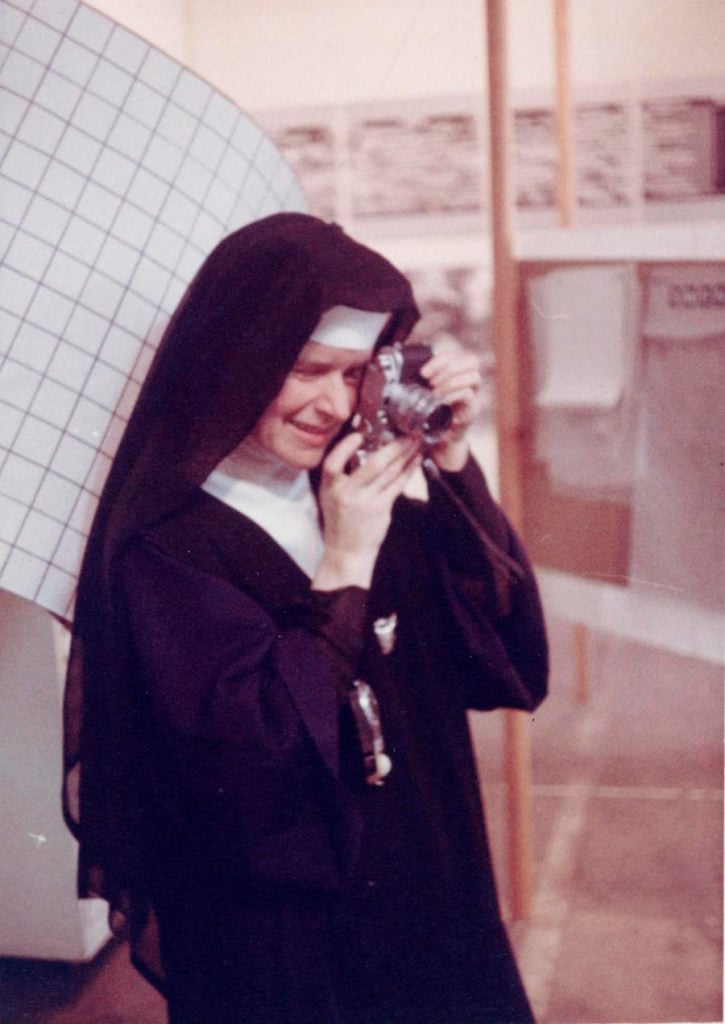
The Pop art great is also enjoying her first New York solo show in a decade.

Sarah Cascone

Corita Kent (1918–1986), the former Roman Catholic nun who used her boldly colored Pop art serigraphs as a tool for activism, becoming a powerful voice for peace and justice, is getting her own dedicated exhibition space. The Corita Art Center in Los Angeles is currently raising money to open a new space in 2020—and they’ve also organized the artist’s first New York solo show in a decade, at Andrew Kreps Gallery, presented cooperatively with kaufmann repetto, New York.
“What is really noteworthy is how relevant the work and message is in our current political climate,” Nellie Scott, the center’s director, told artnet News in an email. “The abundant joy and vibrant colors serve as salve for the soul, but are very much grounded in a call to action that feels unique to each viewer.”
Born Frances Elizabeth Kent, the artist joined the order of the Sisters of the Immaculate Heart of Mary in 1936, when she was just 18. Taking the name Sister Mary Corita, Kent studied art at the Chouinard Art Institute (now CalArts) while earning a degree from Los Angeles’s Immaculate Heart College in 1941. She joined the faculty at the college’s art department in 1947, simultaneously studying for her masters at the the University of Southern California. It was there that Kent began screenprinting.
In 1962, Kent brought a group of students to see an Andy Warhol show at the Ferus Gallery. “That exhibition really changed the way that she was approaching making her art,” Alex Fitzgerald, the associate director at Andrew Kreps, told artnet News.
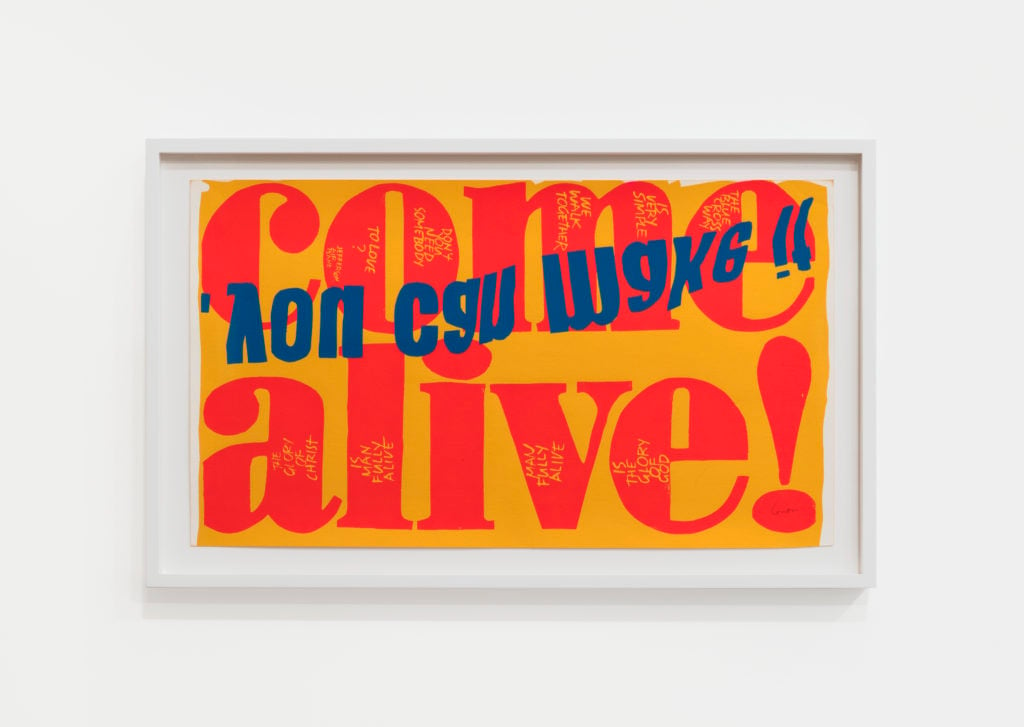
Corita Kent, come alive (1967). Photo by Dawn Blackman, courtesy of the Corita Art Center, Los Angeles and Andrew Kreps Gallery, New York.
Previously, Kent’s work had been largely focused on the internal, spiritual life. Warhol’s groundbreaking appropriation of Campbell’s soup cans inspired her to begin drawing on pop culture for source material in her silkscreen works.
“She really turned her gaze outward, looking at everyday life,” said Fitzgerald, pointing to a work featuring the “Enjoy” logo, taken from a Coca Cola ad and paired with a poem by another nun, Sister Claude, handwritten by Kent.
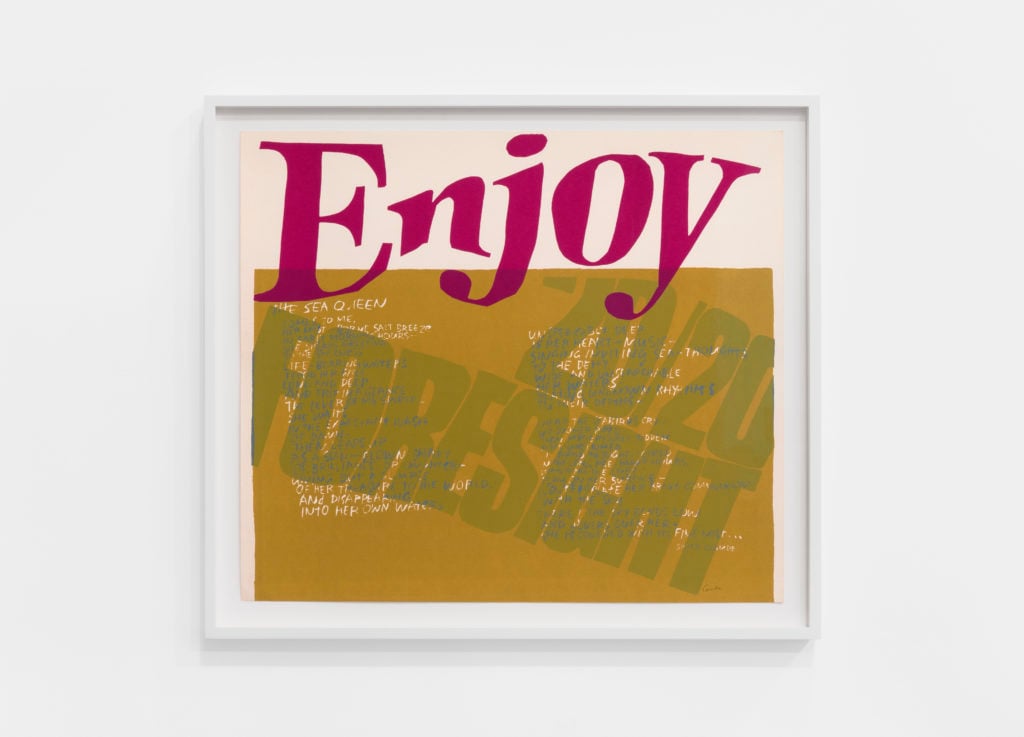
Corita Kent, the sea queen (1967). Photo by Dawn Blackman, courtesy of the Corita Art Center, Los Angeles and Andrew Kreps Gallery, New York.
“She was doing this not after the Pop movement but concurrently,” Fitzgerald added. “She definitely is overlooked. There’s a focus on her as a personality or a public figure rather than for the importance of her work.”
Kent was undeniably famous in her day—she appeared on the cover of Newsweek in 1967—but her work also played an important role in the history of American art. She can be found in the collections of New York’s Whitney Museum of American Art and Museum of Modern Art, among other major institutions.
And she’s a real artist’s artists, according to Fitzgerald: “A lot of artists look to her because she was able to combine this joyous and hopeful outlook with a real political charge.”
Nevertheless, this is Kent’s first New York solo show in a decade, and the prints are on sale for just $3,000 to $5,000, including frames.
“One thing that’s always been important to her work is its democratic aspect, both in the way that it’s assembled and also in the way that it’s priced and goes out into the world,” explained Fitzgerald, noting that at one point, prints were on sale through the Immaculate Heart Community for as little as $50. “None of her editions are individually numbered because she didn’t want to create a hierarchy between different versions of the same print, or between the different prints.”

Corita Kent, love at the end (1969). Photo by Dawn Blackman, courtesy of the Corita Art Center, Los Angeles and Andrew Kreps Gallery, New York.
At the gallery, a selection of Kent’s 1960s screenprints showcase her eye for shape and color, the ease with which she incorporated branded logos and text into her work, and her keen sense of social justice. Deeply concerned with issues of poverty, racism, and war, Kent’s work struck a chord that continues to resonate through the present day.
“This was all made against the backdrop of Vatican II,” explained Fitzgerald, referring to Pope Paul VI’s council that looked to reconsider the Catholic church’s role in the modern world. “She was using these wide themes of acceptance and hope and faith in a way that was separate from religion, but were more of an outlook on life.”
Both Kent and the Sisters of the Immaculate Heart ultimately proved more progressive than the church’s reforms. Kent left the religious life in 1968, moving to Boston. The religious order broke from the church two years later, reforming as an ecumenical lay community, the Immaculate Heart of Mary.
(A small group of nuns remained with the church, and made headlines in recent years over a real estate dispute with singer Katy Perry, who wanted to buy their former convent in Los Feliz, Los Angeles. As of last March, the sisters were looking to appeal their case directly to the Vatican, but there have been no updates to the story since one of the five remaining nuns died after collapsing during an indirectly related court appearance that month.)
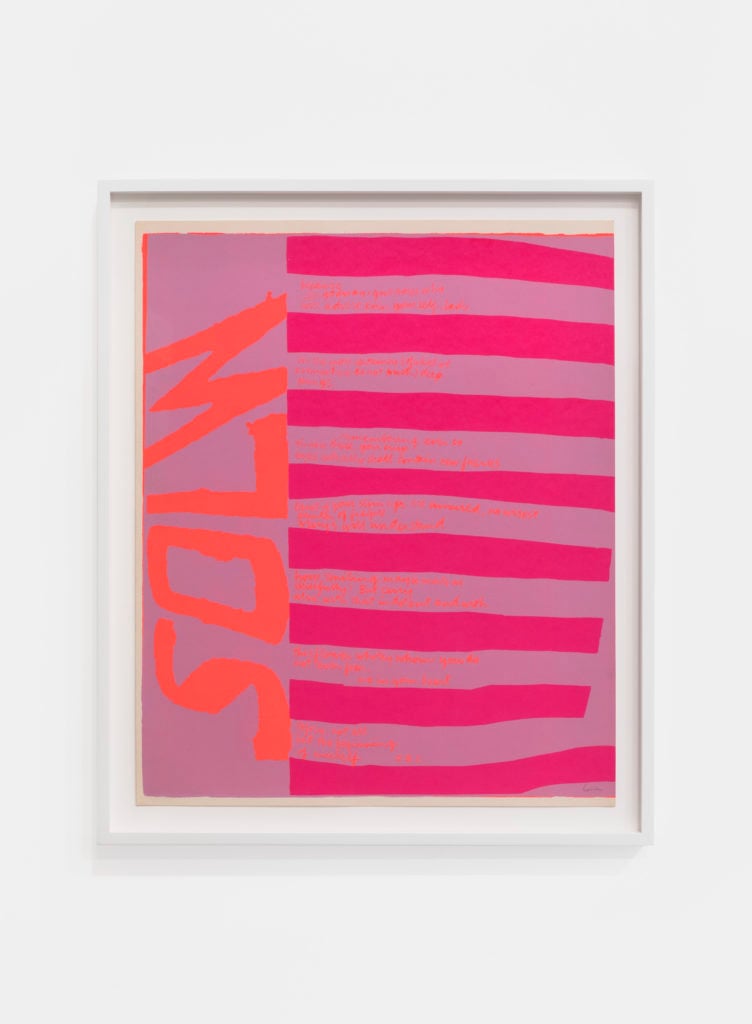
Corita Kent, solw (1967). Photo by Dawn Blackman, courtesy of the Corita Art Center, Los Angeles and Andrew Kreps Gallery, New York.
When Kent died in 1986, she left a selection of her prints to Harvard University in Cambridge, Massachusetts, and to the Hammer Museum at UCLA. The rest of her estate, including her archives, went to the Immaculate Heart Community, which founded the Corita Art Center in 1997.
Last fall, on the occasion of what would have been Kent’s 100th birthday, the Corita Art Center announced plans to break ground on expanded facility with exhibition, education, and conservation space. The center is currently housed at the former Immaculate Heart College, above Kent’s old studio space, but can only be visited Thursdays and Fridays, 10 a.m.–4 p.m., or by appointment.
“The growth will allow us to preserve her legacy, artworks and archives (so many poignant writings and educational pedagogy) for future generations,” wrote Scott, noting that the goal is for a 2020 opening. “It certainly is time for a female artist of her caliber to be recognized with a facility of note.”
See more works from the exhibition below.
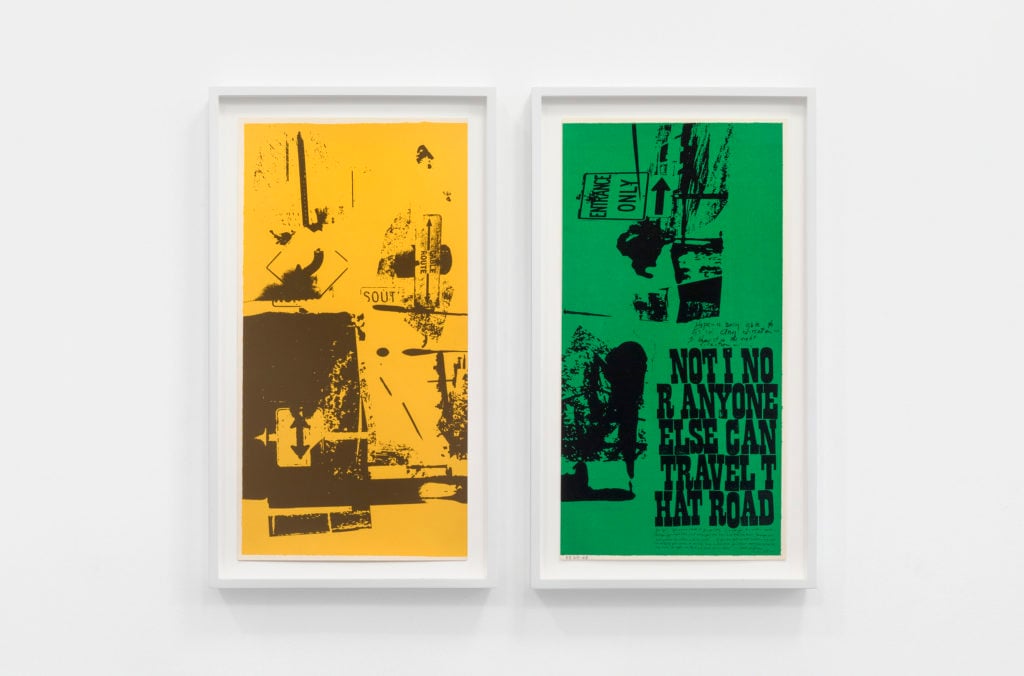
Corita Kent, road signs (part 1 and 2), 1969. Photo by Dawn Blackman, courtesy of the Corita Art Center, Los Angeles and Andrew Kreps Gallery, New York.
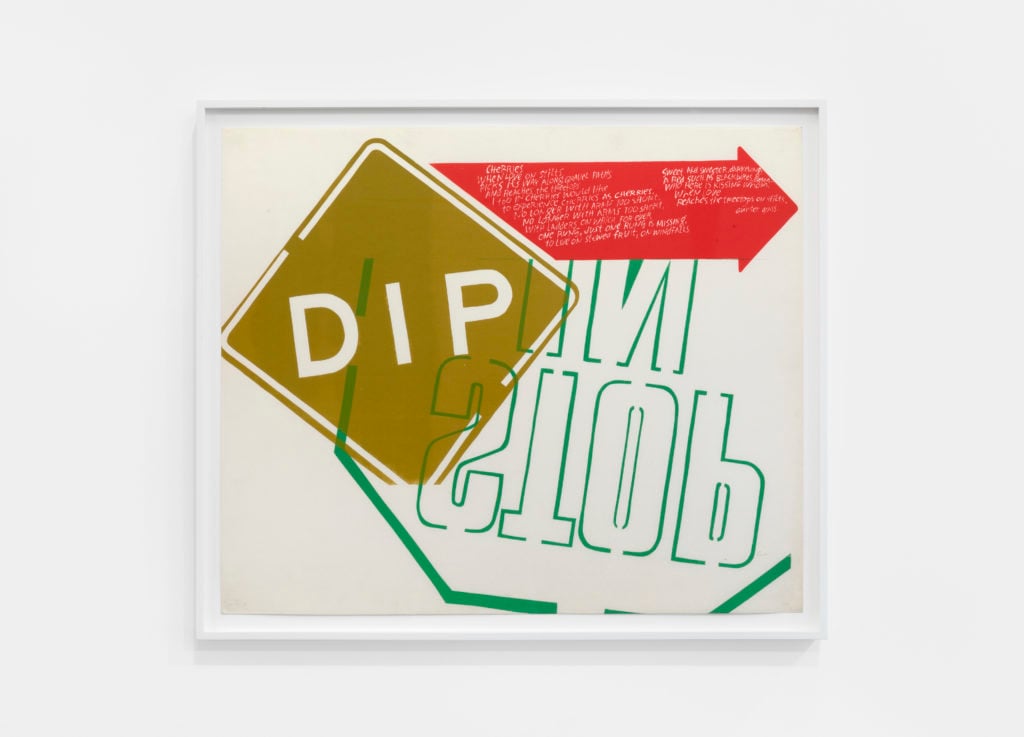
Corita Kent, dip (1967). Photo by Dawn Blackman, courtesy of the Corita Art Center, Los Angeles and Andrew Kreps Gallery, New York.
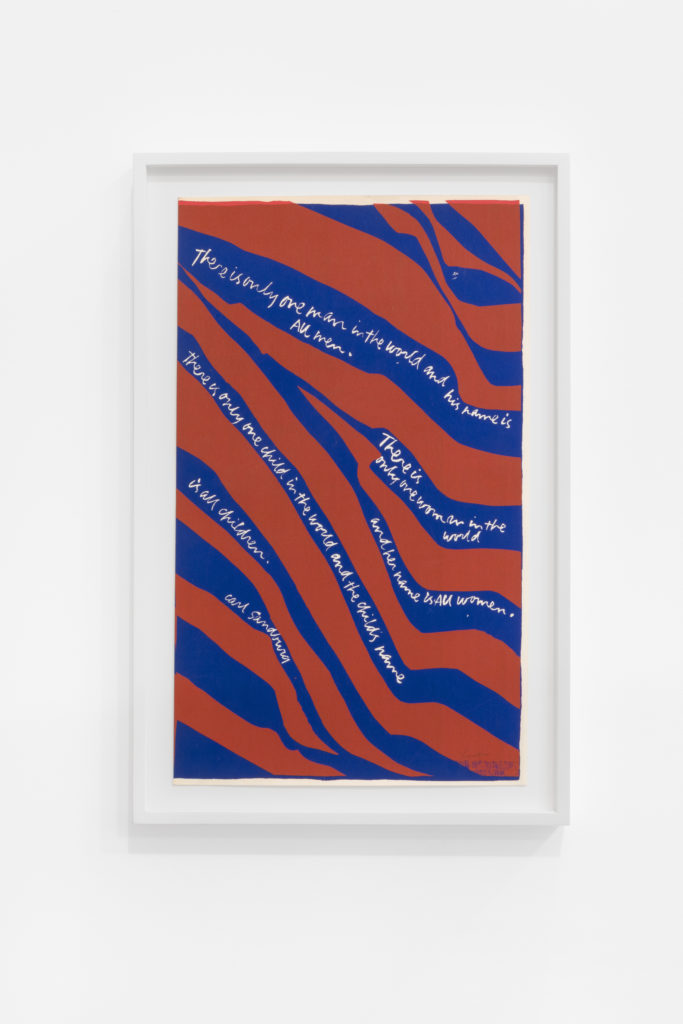
Corita Kent, there is only one man in the world (1967). Photo by Dawn Blackman, courtesy of the Corita Art Center, Los Angeles and Andrew Kreps Gallery, New York.
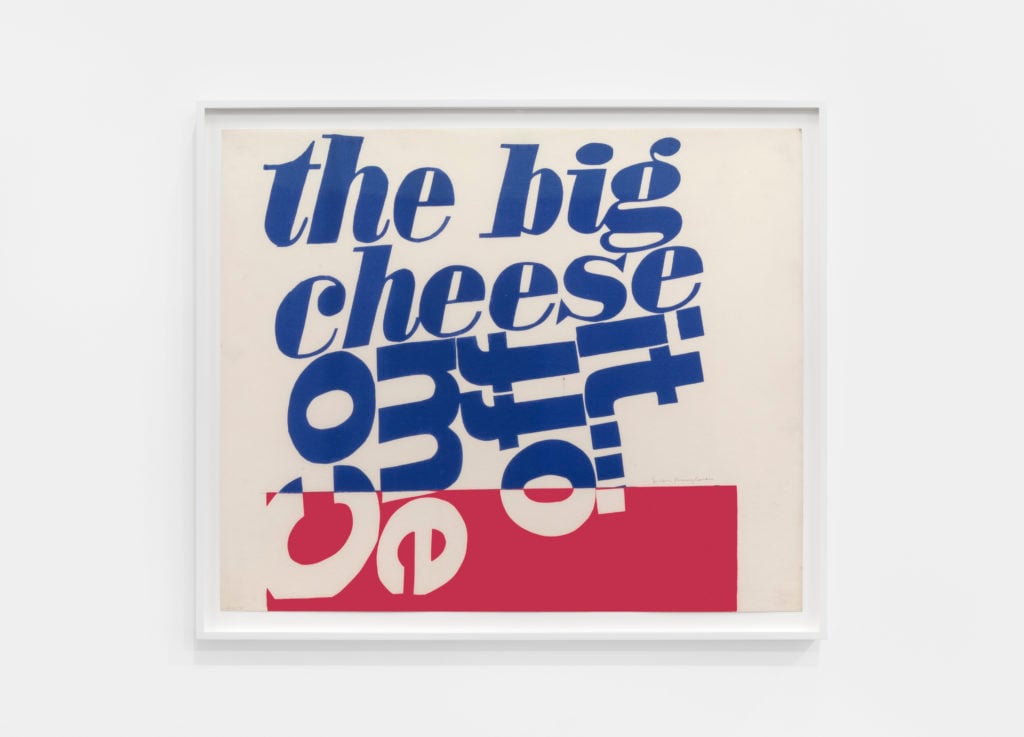
Corita Kent, come off it (1966). Photo by Dawn Blackman, courtesy of the Corita Art Center, Los Angeles and Andrew Kreps Gallery, New York.
“Corita Kent: Works From the 1960s” is on view at Andrew Kreps Gallery, 55 Walker Street, New York, April 26–June 15, 2019.